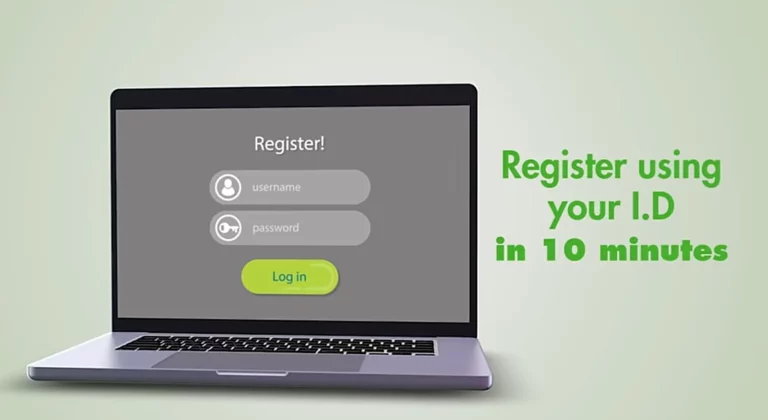Let’s cut to the chase: if you’re not actively marketing your lending business, you’re leaving money on the table.
Plain and simple.
In today’s hyper-competitive financial landscape, having a solid product isn’t enough.
You need to get in front of your ideal customers, showcase your value, and build trust.
That’s where effective marketing strategies for a lending business come into play.
I’ve seen firsthand how the right marketing approach can transform a struggling lender into a thriving powerhouse.
It’s not about fancy gimmicks or throwing money at ads.
It’s about understanding your market, leveraging the right tools, and consistently delivering value.
In this post, I’m going to break down 11 proven tactics that will help you grow your lending business.
These aren’t theoretical concepts – they’re battle-tested strategies that have generated real results for real businesses.
So buckle up, because we’re about to dive deep into the world of lending marketing.
Quick Overview
Before we dive into the nitty-gritty, let’s take a bird’s eye view of our 11 tactics:
- Develop a Strong Online Presence
- Leverage Content Marketing
- Implement Search Engine Optimization (SEO)
- Utilize Social Media Marketing
- Embrace Email Marketing
- Build Strategic Partnerships
- Offer Referral Programs
- Host Educational Webinars and Workshops
- Personalize Your Marketing Approach
- Utilize Targeted Advertising
- Leverage Customer Reviews and Testimonials
Now, you might be thinking, “That’s a lot to tackle.”
And you’re right.
But here’s the thing: you don’t need to implement all of these at once.
Start with the ones that align best with your business goals and resources.
The key is to start somewhere and build momentum.
These tactics work because they address the unique challenges of the lending industry:
- Building trust in a sector often viewed with skepticism
- Educating potential borrowers about complex financial products
- Standing out in a crowded marketplace
- Nurturing long-term relationships with clients
By focusing on these areas, you’ll not only attract more leads but also convert them into loyal customers.
Now, let’s break down each tactic and see how you can put them into action.
The 11 Proven Marketing Tactics
1. Develop a Strong Online Presence
Today, your website is often the first point of contact with potential clients.
It’s your 24/7 salesperson, your brand ambassador, and your information hub all rolled into one.
But here’s the kicker: a mediocre website can do more harm than good.
You need a site that not only looks professional but also provides real value to visitors.
Here’s what your website should include:
- Clear, concise information about your lending products
- Easy-to-use loan calculators and application forms
- Educational resources about borrowing and finance
- A blog with regularly updated, valuable content
- Clear calls-to-action (CTAs) that guide visitors towards conversion
Pro tip: Don’t just focus on desktop users. With mobile traffic outpacing desktop, your site needs to be fully responsive and mobile-friendly.
Tools like WordPress or Wix can help you create a professional-looking site without breaking the bank.
But remember, a website is not a “set it and forget it” deal.
Regularly update your content, test your forms, and analyze user behavior to continuously improve your site’s performance.
2. Leverage Content Marketing
Content marketing is your secret weapon in the lending industry.
Why?
Because it allows you to showcase your expertise, build trust, and educate your audience – all without coming across as pushy or salesy.
The key is to create content that your potential clients actually want to consume.
This could include:
- Blog posts explaining complex financial concepts in simple terms
- Infographics breaking down loan application processes
- Video tutorials on how to improve credit scores
- Podcasts featuring interviews with financial experts
- Downloadable guides on different types of loans
Remember: Your content should always provide value first.
Don’t just create content for the sake of it.
Each piece should address a specific pain point or answer a common question your target audience has.
To make your content marketing efforts more effective:
- Develop a content calendar to ensure consistent output
- Repurpose content across different formats (e.g., turn a blog post into a video)
- Use SEO best practices to increase organic visibility (more on this in the next section)
- Promote your content through various channels (social media, email, etc.)
Tools like Ahrefs or SEMrush can help you identify popular topics and keywords in your industry.
Use these insights to create content that resonates with your audience and ranks well in search engines.
3. Implement Search Engine Optimization (SEO)
SEO is not just a buzzword – it’s a crucial component of any effective marketing strategy for a lending business.
When potential borrowers search for loan-related information, you want your business to show up at the top of the results.
But here’s the thing: SEO is not about gaming the system.
It’s about creating valuable, relevant content and optimizing your site structure to make it easy for search engines to understand and rank your pages.
Here are some key SEO tactics for lenders:
- Conduct thorough keyword research to identify terms your target audience is searching for
- Optimize your website’s meta titles, descriptions, and headers
- Create in-depth, informative content around your target keywords
- Ensure your site has a logical structure with clear navigation
- Improve your site’s loading speed (Google loves fast sites)
- Build high-quality backlinks from reputable financial websites
Pro tip: Local SEO is particularly important for lenders with physical locations. Claim and optimize your Google My Business listing, and ensure your NAP (Name, Address, Phone) information is consistent across all online directories.
Tools like Moz or Yoast SEO can help you optimize your on-page SEO elements.
Remember, SEO is a long-term game.
Don’t expect overnight results.
But with consistent effort, you can significantly increase your organic visibility and attract more qualified leads to your lending business.
4. Utilize Social Media Marketing
Social media might not be the first thing that comes to mind when you think about marketing a lending business.
But ignore it at your peril.
Platforms like LinkedIn, Facebook, and Twitter offer unique opportunities to connect with potential borrowers, share valuable content, and build your brand.
Here’s how to make social media work for your lending business:
- Choose the right platforms: Focus on where your target audience spends their time. LinkedIn is great for B2B lending, while Facebook can be effective for personal loans.
- Share valuable content: Don’t just promote your products. Share financial tips, industry news, and educational content that your audience will find useful.
- Engage with your followers: Respond to comments, answer questions, and participate in relevant discussions. This builds trust and shows that you’re accessible.
- Use visuals: Infographics, charts, and videos can help explain complex financial concepts in an easily digestible format.
- Run targeted ads: Social media platforms offer sophisticated targeting options that allow you to reach potential borrowers based on demographics, interests, and behaviors.
Remember: Social media is about building relationships, not just broadcasting messages.
Aim to provide value and foster engagement rather than constantly pushing your products.
Tools like Hootsuite or Buffer can help you manage multiple social media accounts and schedule posts in advance.
This allows you to maintain a consistent presence without spending all day on social media.
5. Embrace Email Marketing
Don’t let anyone tell you email marketing is dead.
For lending businesses, it remains one of the most effective ways to nurture leads and maintain relationships with existing clients.
The key is to use email strategically, not spam your list with constant promotional messages.
Here’s how to make email marketing work for your lending business:
- Build your list organically: Offer valuable lead magnets (like e-books or calculators) in exchange for email addresses.
- Segment your list: Group subscribers based on their interests, loan types, or stage in the customer journey.
- Personalize your messages: Use the subscriber’s name and tailor content based on their preferences and behavior.
- Provide value: Share useful tips, market updates, and educational content, not just product promotions.
- Use automation: Set up drip campaigns to nurture leads over time.
- Test and optimize: Regularly A/B test your subject lines, content, and send times to improve open and click-through rates.
Pro tip: Use email marketing to stay top-of-mind with past clients. A monthly newsletter or occasional check-in can lead to repeat business or referrals.
Tools like Mailchimp or ActiveCampaign can help you manage your email marketing efforts effectively.
Remember, the goal of email marketing is not just to sell, but to build and maintain relationships with your audience.
6. Build Strategic Partnerships
In the lending world, who you know can be just as important as what you know.
Strategic partnerships can open up new channels for client acquisition and help you offer more comprehensive services.
Consider partnering with:
- Real estate agents
- Financial advisors
- Accountants
- Insurance agents
- Business consultants
These professionals often have clients who need lending services.
When you build mutually beneficial relationships, you can tap into their networks and gain warm referrals.
Here’s how to approach partnerships:
- Identify potential partners whose services complement yours
- Reach out with a clear value proposition
- Start small and build trust over time
- Provide excellent service to referred clients
- Reciprocate by referring business back when appropriate
Remember: Partnerships are about creating win-win situations. Always focus on how you can add value to your partner and their clients.
Tools like LinkedIn Sales Navigator can help you identify and connect with potential partners in your area.
7. Offer Referral Programs
Happy clients can be your best marketers.
A well-structured referral program incentivizes them to spread the word about your lending services.
Here’s how to create an effective referral program:
- Define clear benefits: Offer meaningful rewards for successful referrals. This could be cash bonuses, rate discounts, or other valuable perks.
- Make it easy: Provide clients with simple tools to share your services, like personalized referral links or easy-to-forward emails.
- Train your team: Ensure all staff members understand the referral program and can explain it to clients.
- Follow up promptly: When you receive a referral, act quickly to show that you value the recommendation.
- Show appreciation: Thank both the referrer and the new client for their trust.
Pro tip: Consider tiered rewards for multiple referrals to encourage ongoing advocacy.
Tools like ReferralCandy or Ambassador can help you manage and track your referral program efficiently.
Remember, the best referral programs feel natural, not forced.
Focus on providing exceptional service, and referrals will often follow naturally.
8. Host Educational Webinars and Workshops
In the lending industry, education is key.
Many potential borrowers are intimidated by the complexity of financial products or unsure about their options.
When you host educational webinars and workshops, you position yourself as an expert and build trust with your audience.
Here’s how to make this tactic work:
- Choose relevant topics: Address common questions and pain points your target audience faces.
- Keep it valuable: Focus on providing actionable information, not just promoting your products.
- Invite guest experts: Collaborate with professionals in related fields to offer diverse perspectives.
- Make it interactive: Allow time for Q&A sessions to address specific concerns.
- Follow up: Send attendees additional resources and offer personalized consultations.
Remember: The goal is to educate and build relationships, not to hard-sell your services.
Tools like Zoom or WebinarJam can help you host professional-looking webinars with interactive features.
By consistently providing value through these educational events, you’ll build a reputation as a trusted advisor in the lending space.
9. Personalize Your Marketing Approach
With today’s world of information overload, generic marketing messages just don’t cut it anymore.
Personalization is key to standing out and resonating with your target audience.
Here’s how to personalize your marketing for your lending business:
- Segment your audience: Divide your prospects based on criteria like loan type, credit score, or business size.
- Tailor your messaging: Create specific content and offers for each segment.
- Use dynamic content: Implement tools that automatically adjust website content based on visitor behavior or characteristics.
- Leverage data: Use the information you have about clients to personalize communications.
- Implement chatbots: Use AI-powered chatbots to provide personalized assistance on your website.
Pro tip: Don’t just personalize by name. Use behavioral data to recommend relevant products or content to each prospect.
Tools like HubSpot or Marketo can help you implement personalized marketing campaigns at scale.
Remember, the goal of personalization is to make each prospect feel understood and valued.
This builds trust and increases the likelihood of conversion.
Read also: 7 Easy Customer Acquisition Strategies Every Lending Business Should Try
10. Utilize Targeted Advertising
While organic reach is important, paid advertising allows you to get your message in front of the right people quickly.
The key is to be strategic and targeted in your approach.
Here’s how to make targeted advertising work for your lending business:
- Define your audience: Use demographic, geographic, and behavioral data to create detailed customer personas.
- Choose the right platforms: Advertise where your target audience spends their time. This could be Google Ads, social media platforms, or industry-specific websites.
- Create compelling ad copy: Focus on the benefits of your lending services, not just the features.
- Use retargeting: Show ads to people who have previously interacted with your website or content.
- Test and optimize: Continuously A/B test your ads to improve performance over time.
Remember: The most effective ads solve a problem or address a pain point for your target audience.
Tools like Google Ads or Facebook Ads Manager offer sophisticated targeting options and analytics to help you optimize your campaigns.
Don’t just set and forget your ads.
Regularly review performance and adjust your strategy based on the data.
11. Leverage Customer Reviews and Testimonials
In the lending industry, trust is everything.
And there’s no better way to build trust than through the words of satisfied customers.
Here’s how to effectively leverage customer reviews and testimonials:
- Ask for reviews: Implement a systematic process to request feedback from happy clients.
- Showcase testimonials: Feature client success stories prominently on your website and marketing materials.
- Respond to all reviews: Address both positive and negative feedback professionally.
- Use video testimonials: These can be particularly powerful in conveying client experiences.
- Leverage review platforms: Encourage clients to leave reviews on platforms like Google My Business or Trustpilot.
Pro tip: Don’t just focus on the glowing 5-star reviews. Thoughtful responses to critical feedback can actually enhance your credibility.
Tools like Yotpo or BirdEye can help you manage and showcase customer reviews effectively.
Remember, authentic testimonials are worth their weight in gold.
They provide social proof that can significantly influence potential borrowers’ decisions.
How to Implement These Tactics
Now that we’ve covered the 11 proven marketing strategies for a lending business, you might be feeling a bit overwhelmed.
Don’t worry – you don’t need to implement all of these strategies at once.
Here’s a step-by-step approach to get you started:
- Assess your current marketing efforts: Identify what’s working and what’s not.
- Set clear goals: Define what you want to achieve with your marketing efforts.
- Prioritize tactics: Choose 2-3 strategies that align best with your goals and resources.
- Create an action plan: Break down each tactic into specific, actionable steps.
- Allocate resources: Determine the time, money, and personnel needed for each tactic.
- Implement: Start with small, manageable actions and build momentum.
- Monitor and measure: Track key metrics to assess the effectiveness of each tactic.
- Adjust and optimize: Based on your results, refine your approach over time.
- Gradually expand: As you see success, start incorporating additional tactics.
Remember: Marketing is not a one-time effort, but an ongoing process.
When prioritizing these tactics, consider:
- Your target audience: Which strategies will resonate most with your ideal borrowers?
- Your resources: What can you realistically implement with your current budget and team?
- Quick wins vs. long-term strategies: Balance tactics that can provide immediate results (like targeted ads) with those that build long-term value (like SEO and content marketing).
Here’s a sample implementation plan:
Month 1-3:
- Develop a strong online presence (update website, optimize for mobile)
- Start a blog and create initial content pieces
- Set up social media profiles and begin posting regularly
Month 4-6:
- Implement basic SEO strategies
- Launch an email marketing campaign
- Begin building strategic partnerships
Month 7-9:
- Start hosting educational webinars
- Implement a referral program
- Ramp up content marketing efforts
Month 10-12:
- Launch targeted advertising campaigns
- Focus on personalizing marketing approaches
- Actively collect and showcase customer reviews
Pro tip: Don’t try to be perfect from the start. It’s better to launch and improve over time than to delay implementation in pursuit of perfection.
Remember, the key to successful implementation is consistency.
Set realistic goals, stick to your plan, and be prepared to adjust as you learn what works best for your specific lending business.
Final Thoughts
Implementing effective marketing strategies for a lending business isn’t just about attracting more leads – it’s about building a sustainable, thriving business that stands out in a crowded market.
The 11 tactics we’ve discussed provide a comprehensive framework for growing your lending business:
- Developing a strong online presence
- Leveraging content marketing
- Implementing SEO
- Utilizing social media marketing
- Embracing email marketing
- Building strategic partnerships
- Offering referral programs
- Hosting educational webinars and workshops
- Personalizing your marketing approach
- Utilizing targeted advertising
- Leveraging customer reviews and testimonials
Each of these strategies has the potential to significantly impact your business growth.
But remember, the magic happens when you combine these tactics into a cohesive, integrated marketing strategy.
As you implement these strategies, always keep your focus on providing value to your potential borrowers.
The lending industry is built on trust, and every marketing effort should reinforce your credibility and expertise.
Don’t be afraid to experiment and adapt these tactics to fit your unique business model and target audience.
What works for one lender may not work for another, so be prepared to test, measure, and refine your approach over time.
Finally, remember that marketing is not a one-time effort but an ongoing process.
Stay informed about industry trends, keep learning, and continually refine your strategies.
Consistently apply these proven marketing tactics, and you’ll be well on your way to growing a successful, sustainable lending business that stands out in today’s competitive financial landscape.
FAQ Section
How long does it take to see results from these marketing strategies?
The timeline for results can vary depending on the specific tactics and your consistent effort. Some strategies like targeted advertising can show immediate results, while others like SEO and content marketing may take 3-6 months to show significant impact. Consistency and patience are key.
Which marketing tactic is most effective for lending businesses?
There’s no one-size-fits-all answer, as effectiveness can vary based on your specific business model, target audience, and resources. However, a combination of content marketing, SEO, and targeted advertising often yields strong results for many lending businesses.
How much should I budget for marketing my lending business?
A common benchmark is to allocate 7-10% of your revenue for marketing. However, this can vary based on your growth goals and competitive landscape. Start with what you can afford and increase your budget as you see positive ROI from your efforts.
Is social media really important for a lending business?
Yes, social media can be very important. It allows you to reach potential borrowers, share valuable content, and build trust. Platforms like LinkedIn can be particularly effective for B2B lending, while Facebook and Instagram can work well for personal lending.
How can I measure the success of my marketing efforts?
Key metrics to track include website traffic, lead generation, conversion rates, cost per acquisition, and return on investment (ROI). Use tools like Google Analytics and your CRM system to track these metrics and adjust your strategies accordingly.
Do I need to hire a marketing agency or can I do this in-house?
This depends on your resources and expertise. Many lending businesses start with in-house efforts and later partner with agencies for specialized tasks or to scale their efforts. If you’re just starting, focus on learning and implementing basics in-house, then consider outside help as you grow.
Read also:




